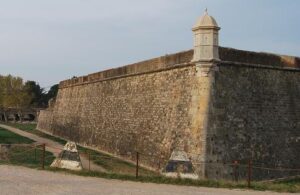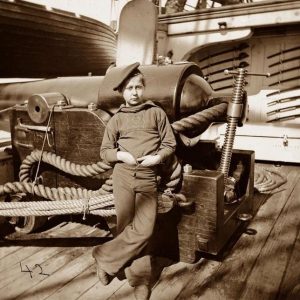gun powder
 Any time you are working with or storing gun powder or other explosives, you run the risk of an explosion. I don’t think that any such explosion is death-free, unless possibly if the factory or warehouse is empty at the time. That is unlikely, because most of these places have at the very least, security personnel working there 24/7 and many run shifts around the clock as well. Of course, that is in today’s world. Back in 1769, however, it is unlikely that people were in the facility 24/7.
Any time you are working with or storing gun powder or other explosives, you run the risk of an explosion. I don’t think that any such explosion is death-free, unless possibly if the factory or warehouse is empty at the time. That is unlikely, because most of these places have at the very least, security personnel working there 24/7 and many run shifts around the clock as well. Of course, that is in today’s world. Back in 1769, however, it is unlikely that people were in the facility 24/7.
A part of the Republic of Venice…Brescia was the site of the Bastion of San Nazaro, a military arsenal and powder storage area. About 200,000 pounds of black powder was stored at the site, enough to destroy about a sixth of the city when a lightning bolt set off the blast in 1769. Because buildings then were not built in such a way as to protect from fire and lightning, there was more risk of disaster than we have today, and there is plenty of  risk today, but possibly less from lightning. Unfortunately, in 1769, disaster came in the form of lightning striking the structure. The ensuing explosion actually devastated the town. When the lightning struck, it started a fire that ignited 198,416 pounds of gunpowder stored at the bastion. As the fire burned, it caused a massive explosion which destroyed one-sixth of the Brescia and killed approximately 6,000 people. Giant rocks and building stones were launched about a kilometer away in every direction, causing massive damage to the surrounding area and crushing unfortunate people. The blast also blew out windows and blew in doors to buildings over a wide area.
risk today, but possibly less from lightning. Unfortunately, in 1769, disaster came in the form of lightning striking the structure. The ensuing explosion actually devastated the town. When the lightning struck, it started a fire that ignited 198,416 pounds of gunpowder stored at the bastion. As the fire burned, it caused a massive explosion which destroyed one-sixth of the Brescia and killed approximately 6,000 people. Giant rocks and building stones were launched about a kilometer away in every direction, causing massive damage to the surrounding area and crushing unfortunate people. The blast also blew out windows and blew in doors to buildings over a wide area.
With a reported death toll of around 6000, this Italian disaster ranks among the worst of the black powder explosions of all time. Who would have thought that an explosion could take out one-sixth of a city? Today,  Brescia has over 200,000 people, and while we don’t know the population back then, we know that a devastation of one-sixth of it killed 3,00 to 6,000 people, so it must have had as many as 50,000 people living there in 1769. The number of fatalities varies among those making estimates, with some saying 3,000. Nevertheless, 3,000 or 6,000 is irrelevant because any loss of life is devastating. This particular tragedy motivated Benjamin Franklin to experiment with the use of lightning rods to protect powder storage buildings. His work found a way to help make buildings a little safer and so lightning rod usage was advised in powder storage buildings…advice apparently taken by the British.
Brescia has over 200,000 people, and while we don’t know the population back then, we know that a devastation of one-sixth of it killed 3,00 to 6,000 people, so it must have had as many as 50,000 people living there in 1769. The number of fatalities varies among those making estimates, with some saying 3,000. Nevertheless, 3,000 or 6,000 is irrelevant because any loss of life is devastating. This particular tragedy motivated Benjamin Franklin to experiment with the use of lightning rods to protect powder storage buildings. His work found a way to help make buildings a little safer and so lightning rod usage was advised in powder storage buildings…advice apparently taken by the British.
 A while back, while looking at historical pictures, I came across one that bore an amazing resemblance to my grandson, Chris Petersen. I realize that a lot of people say that some people remind them of other people, but even my family agreed that this young man looked like Chris at that age. I have no idea who this boy is, or if he is related to Chris, because the picture doesn’t tell his name…just his occupation, which was quite interesting. The boy is, what is known as, a Powder Monkey. I had no idea what that was, and after doing some research on it, I’m thankful that powder monkey is not an occupation we have today, and thankful that my grandson never had the opportunity to be one. To me, it seems like a very dangerous occupation.
A while back, while looking at historical pictures, I came across one that bore an amazing resemblance to my grandson, Chris Petersen. I realize that a lot of people say that some people remind them of other people, but even my family agreed that this young man looked like Chris at that age. I have no idea who this boy is, or if he is related to Chris, because the picture doesn’t tell his name…just his occupation, which was quite interesting. The boy is, what is known as, a Powder Monkey. I had no idea what that was, and after doing some research on it, I’m thankful that powder monkey is not an occupation we have today, and thankful that my grandson never had the opportunity to be one. To me, it seems like a very dangerous occupation.
Powder boys were used during the 17th century on warships. A powder boy or “powder monkey” manned naval artillery guns as a member of a warship’s crew, primarily during the age of sailboats. His chief role was to carry gunpowder from the powder magazine in the ship’s hold to the artillery guns. Sometimes he carried bulk powder and other times he carried cartridges, to minimize the risk of fires and explosions. The function was usually fulfilled by boy seamen of 12 to 14 years of age. Powder monkeys were selected for the job for their speed and height. They needed to be short so they could not be seen, and could move more easily in the limited space between decks, while remaining hidden behind the ship’s gunwale, thereby keeping them from being shot by enemy ships’ sharp shooters. Some women and older men also worked as powder monkeys. I realize that this might have seemed like a good idea, but as a mom and grandma, I would be terribly worried if that were my boy on one of those ships.
While the Royal Navy first began using the term “powder monkey” in the 17th century, it was later used, and  continues to be used in some countries, to signify a skilled technician or engineer who engages in blasting work, such as in the mining or demolition industries. In such industries, a “powder monkey” is also sometimes referred to as a “blaster.” It seems that just about any occupation that carries the name “powder monkey” is a dangerous one. As to the boys who did this work on warships, well…their bravery is amazing. They must have see death around them. They knew the risks. Still, they saw a need, and knew that their contribution would help their country. They were patriots, and as with any soldier, they have my respect. They should never be forgotten, because they were soldiers too…in every way.
continues to be used in some countries, to signify a skilled technician or engineer who engages in blasting work, such as in the mining or demolition industries. In such industries, a “powder monkey” is also sometimes referred to as a “blaster.” It seems that just about any occupation that carries the name “powder monkey” is a dangerous one. As to the boys who did this work on warships, well…their bravery is amazing. They must have see death around them. They knew the risks. Still, they saw a need, and knew that their contribution would help their country. They were patriots, and as with any soldier, they have my respect. They should never be forgotten, because they were soldiers too…in every way.

